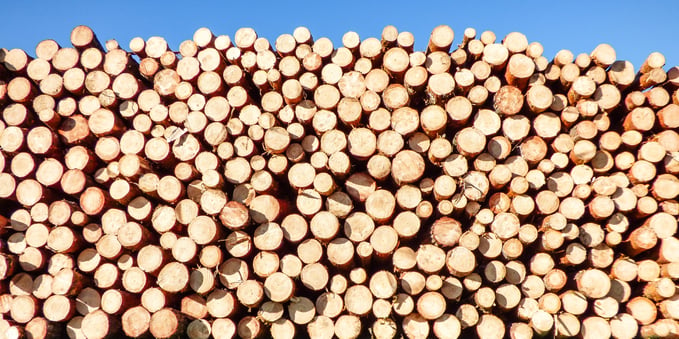
Wood has been the most utilized material for utility poles for many decades. But wood has always been at the mercy of Mother Nature. Humans haven’t yet created an artificial process to create wood like we have for lab-grown diamonds or farm-grown fish. When we need wood, we must wait on Earth to grow it.
The demand for a stronger utility grid is growing almost exponentially, but the supply of trees that can produce a good utility pole continues to grow at its own pace. Fiber Reinforced Polymer utility poles offer superior strength and resiliency as well as the ability to be produced sustainably on-demand.
Nature’s Supply Chain Problem
When it comes to wood utility poles, not just any tree will do. Wood utility poles can come only from a very specific type of tree: Southern Yellow Pine (80%) as well as Douglas Fir and Western Red Cedar (20%). These trees that can take over a quarter-century to grow to a usable size and make up only 5-10% of trees in a typical forest. And even after such a long wait, many trees – sometimes up to half or more – must be rejected due to quality and suitability.
The North American Wood Pole Council (NAWPC) explained that, “In the last 10 years, utilities have moved to a slightly larger and stronger class pole due to the increased use of third-party attachments, the push for grid resiliency and the general increase in power demand that requires larger conductors. Today the use of Class 3 poles and stronger has increased while the production of Class 5 and 6 poles has declined.” As storms increase in frequency and ferocity, utility poles must be strong enough to maintain grid resiliency, and the previously acceptable Class 5 and 6 poles aren’t up to the challenge without adding substantially more poles and crossarms. But Class 3 up to Class H1 poles require increasingly large, hardy trees. And large, hardy trees take more time to grow.
If climate change continues at current rates, the forests that grow wood poles will not be able to keep up with the grid’s demands.
One Answer: Fiber Reinforced Polymer Utility Poles
The answer is not to count wood poles out just yet. They remain an important option for the utility pole market. But they should not be the only option.
Although much newer than wood, Fiber Reinforced Polymer (FRP) is a mature product well beyond first-generation technology, backed by 25 years of data on its success and reliability. FRP should be considered right alongside wood and steel as a suitable material for utility poles. Each case is unique, and when properly specified and installed, FRP is even more reliable and resilient than competing utility pole materials.
Because it is a manmade product, formula changes can be made quickly to accommodate changing market needs and the poles can be produced in nearly any amount as needed. The automated production method, pultrusion, is a more environmentally friendly process than that of wood or steel. And while an individual wood pole has a better carbon footprint than an individual FRP pole, FRP poles have the best longevity and reliability over the service life, when comparing life cycle analyses of FRP, wood and steel. This means you’re replacing FRP poles half as often or less than competing materials, reducing the emissions for production and transportation.
Prepare for tomorrow today. Contact us to learn more about StormStrong FRP poles as one solution to the coming shortage of wood utility poles.
